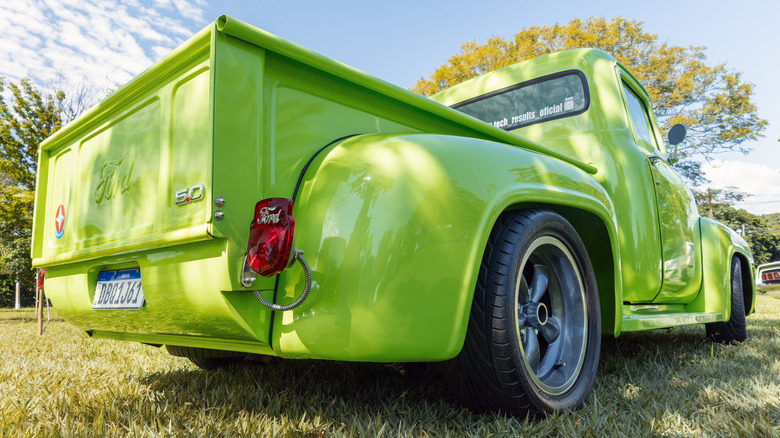Aside from its blue oval badge and revolutionary moving assembly line for large-scale production, Ford is famous for its pickup trucks. The Michigan-based automaker’s F-series remains undefeated as the best-selling truck in the U.S. for 47 consecutive years. With their durability, reliability, performance, and cutting-edge design, Ford’s pickup trucks are capable in every department on the road. However, like other car brands, Ford has its fair share of failed experiments and releases in its truck lineup. One of them is the company’s first-ever implementation of the unibody design.
Advertisement
Long before Ford introduced the now-popular Maverick pickup truck with modern unibody construction, the automaker first attempted to sell this innovative design in the 1960s. When Ford peeled back the curtain on its two-door styleside F-100 and F-250 trucks in 1961, it surprised the market by offering unibody options for both models. The idea behind this was to give consumers a ride that’s more rigid and lighter, so they would have superior handling of the vehicles and enjoy better fuel economy. Unfortunately, the unibody variants failed to break into the market, forcing Ford to terminate its production just two years later in 1963 — marking a short-lived chapter in the company’s storied history. However, that wasn’t the end of unibody construction for Ford vehicles, as things like the unibody Ford Maverick of today wouldn’t exist without this first effort.
Advertisement
What caused Ford’s first unibody design to fail?
Ford’s unibody design offered theoretical advantages over the conventional models of the F-100 and F-250 trucks. However, it was also plagued by several issues, causing buyers to opt for the traditional variants instead. For instance, one of its supposedly main selling points — structural rigidity — did not translate well in real-world use. Ford promised the unibody chassis would promote rigidity while driving, but early owners quickly learned this was not the case when the trucks were loaded. Too much body flex and twists made the platform unstable and unsafe.
Advertisement
Ford also failed to anticipate another issue with its first unibody implementation for its pickups — door jamming. When the cargo bed was heavily loaded, the doors tended to jam shut as a result of the body flexing. When driving over uneven surfaced or railroad tracks, they also tended to randomly pop open. Additionally, repair costs needed to maintain Ford’s first unibody pickup trucks posed a challenge to owners. Considering that the chassis and body were a single unit, significant damage to any part would entail repairs for the entire body, making the units impractical for long-term use.
Ford didn’t give up on its unibody concept after the 1960s
Although it would seem like Ford gave up on its unibody architecture in the years that followed the canned 1961-1963 Ford F-series models, the automaker did not scrap this concept altogether. Instead, the company quietly worked on improving this technology for its other vehicles, such as the Ford Escape in 2001 (developed in tandem with Mazda), and the Ford Transit van in 2015.
Advertisement
Both models were considered some of the most fuel-efficient models for their time, and they also offered better handling and driving experiences. Then there’s the 2015 Ford F-150, which debuted with an aluminum unibody architecture and also performed well in the U.S. market. It can be assumed that these vehicles’ success paved the way for Ford to once again gamble on its unibody technology for its pickup truck offerings in more recent times.
In late 2021, Ford revived the “Maverick” nameplate by transforming it from a compact sedan of the 1970s into a four-door compact pickup truck. The 2022 Maverick showcased a modern unibody design that departed from the traditional body-on-frame architecture. It featured an independent front suspension and rear coil springs for enhanced handling and comfort. Under the hood, the Maverick offered a hybrid powertrain comprised of a 2.5-liter four-cylinder engine and an electric motor, delivering impressive fuel efficiency and capability even on rugged terrain. In hindsight, Ford’s earlier effort did not go to waste; it served as a stepping stone for future innovations in automotive engineering.
Advertisement


